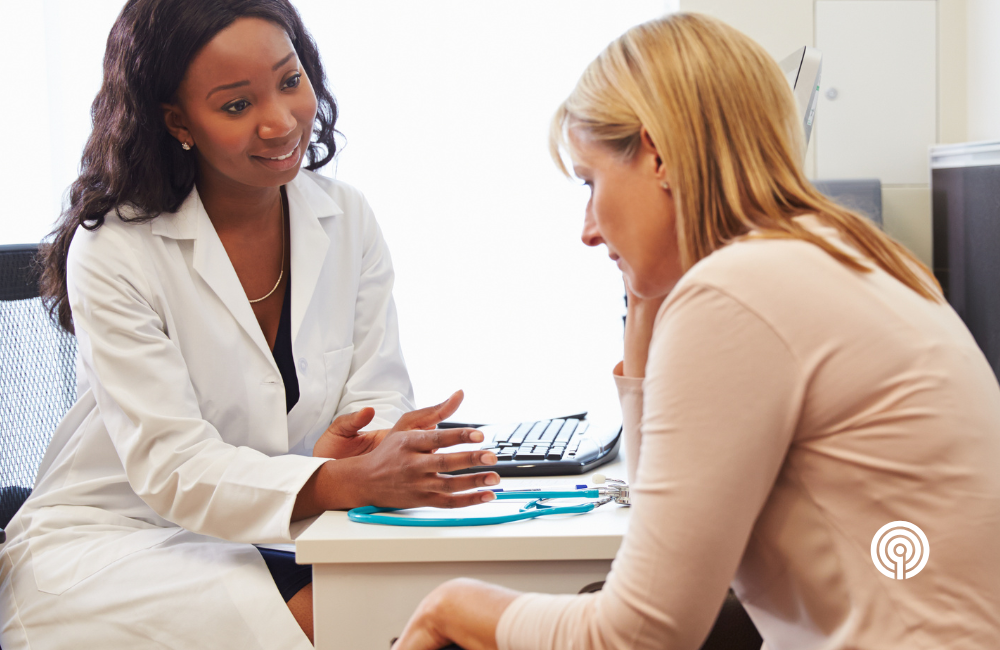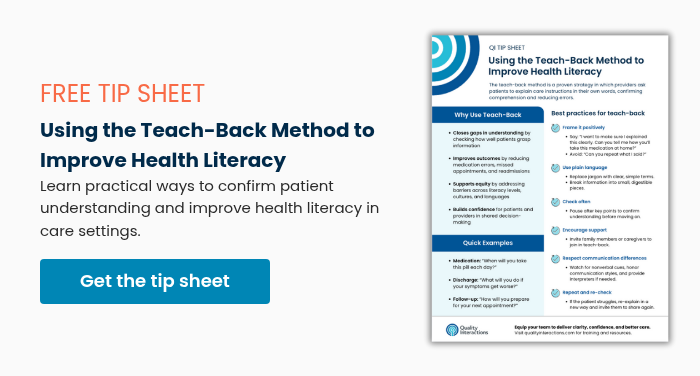
Clear communication between providers and patients is one of the most powerful tools for improving healthcare outcomes. Nearly 9 out of 10 adults in the United States struggle with health literacy, which is the ability to understand and use health information to make informed decisions about their care. One proven strategy that supports understanding is the teach-back method.
About health literacy
Health literacy is not just about reading ability. It involves whether people can access, process, and apply health information in ways that affect their well-being. Research shows that nearly 90 percent of U.S. adults have limited health literacy skills, making it difficult to follow medical instructions, navigate the healthcare system, or manage chronic conditions.
Low health literacy is not confined to certain groups. Even highly educated individuals may face challenges during times of stress, illness, or emotional strain. For example, a patient in the emergency room may struggle to understand discharge instructions despite normally having no difficulty with complex information. Recognizing that health literacy can change depending on circumstances helps providers approach every patient interaction with clarity and empathy.
What is the teach-back method?
The teach-back method is a simple, evidence-based communication technique in which healthcare providers ask patients to repeat back in their own words what they need to know or do. Instead of asking, “Do you understand?” providers might say, “I want to make sure I explained that clearly. Can you tell me how you’ll take this medication when you get home?”
This approach helps providers confirm comprehension, identify gaps in understanding, and explain instructions again if needed.
Why teach-back matters for health literacy
When patients do not fully understand their care instructions, the risks are high: medication errors, missed appointments, and preventable readmissions. The teach-back method helps by promoting:
-
Clarity: Patients demonstrate their understanding by using their own words.
-
Engagement: Patients actively participate in the conversation instead of passively receiving information.
-
Equity: Teach-back reduces misunderstandings across literacy levels, cultures, and languages.
-
Safety: Confirming comprehension reduces errors and improves adherence to care plans.
Best practices for using teach-back
To make the most of the teach-back method:
-
Normalize the process. Present teach-back as a way to check your communication, not the patient’s abilities.
-
Example: “I want to be sure I explained that well. Can you share how you’ll do this at home?”
-
-
Break down information. Share key points in small segments and check for understanding before moving on.
-
Use plain language. Avoid jargon and adjust your language to the patient’s level.
-
Encourage family or caregivers. Invite them to participate so everyone understands the care plan.
-
Respect communication differences. Pay attention to nonverbal cues, recognize diverse communication styles, and bring in interpreters when needed.
-
Re-explain when needed. If the patient struggles, present the information in a new way and ask them to share again, keeping the focus on clarity rather than assessment.
Building a culture of health literacy
The teach-back method is more than a communication tool. It is part of a larger approach to patient-centered care. When used consistently, teach-back can transform everyday interactions into opportunities for understanding, trust, and improved outcomes.
Health literacy training and resources for healthcare teams
At Quality Interactions, we design training that equips healthcare teams with practical strategies such as the teach-back method. Our self-paced, accredited courses combine expert insights with real-world scenarios to help providers build skills they can use immediately in practice. In addition to our one-hour courses, we offer bite-sized microlearning, videos, and downloadable reference guides available in our Resource Library. Together, these resources support providers in strengthening communication and improving care for every patient.
You may also like:


